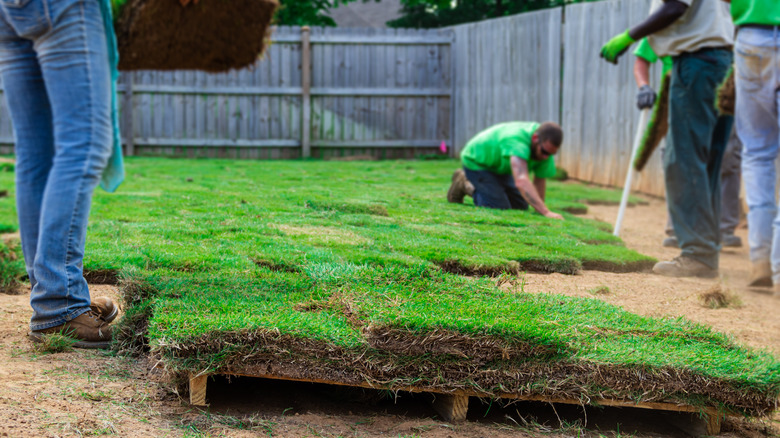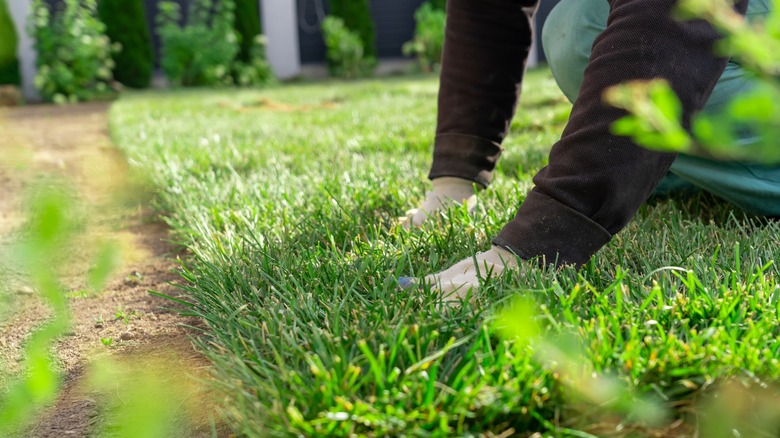Laying sod on your lawn can offer a nearly instant solution if you want to transform your yard. With sod, you’re essentially applying a “lawn in a box” — pre-grown grass that takes far less time to establish than seed. You don’t have to wait for the grass to sprout, as it arrives mature and healthy, ready to be rolled out for immediate results. It’s a quick, effective way to get a lush lawn. However, although sod can be installed nearly year-round, there’s a best time to do it, and early fall takes the crown. The timing isn’t just about the calendar — the seasonality of laying sod coincides with various factors, from soil temperature to weather patterns, each influencing how well your new lawn will take root and flourish. Selecting the right time to lay sod is about giving your grass the best start in its new home, ultimately saving you time and resources in the long run.
Choosing the wrong time can lead to various problems, including disease, poor root development, and even total lawn failure. The quality of the sod, the preparation of your soil, and your post-installation care all have significant roles to play. Nevertheless, even the best sod can struggle if laid at an inappropriate time, making your investment less cost-effective and leaving you with a lawn that fails to meet expectations. In short, it’s important to understand why early fall offers the best conditions for laying sod and how to optimize the process for the best results.
Opt for early fall for sod installation: the why and how

As mentioned, early fall is the best time to install sod. Why? Because the nights are cooler and the daytime remains warm. This temperature combination promotes rapid root integration into the soil. However, you must monitor soil temperatures to ensure consistent readings in the mid-50 degrees Fahrenheit or above. Another benefit of laying sod in the early fall is that it gives your new grass ample time to establish itself before winter. While spring may seem appealing for sod installation, it comes with a cautionary note. The variable weather can make conditions less predictable. Also, grass does tend to grow better during moderate temperatures in early to mid-fall, giving this season a slight edge over spring. Generally speaking, it’s best to avoid laying sodtoo late in the fall, because as the ground approaches its freezing point, sod installation becomes more difficult.
Similarly, laying sod during prolonged drought conditions isn’t advisable. The dry soil places extra stress on the new grass. If drought is an issue, you still need to go ahead and use water-saving techniques like drip irrigation systems or moisture-retaining soil additives. It might also be a good idea to opt for drought-resistant sod made with varieties of grass that are specially bred or naturally inclined to withstand prolonged periods of low water availability. These adjustments can make a significant difference in successfully establishing your new sod.
Sod laying tips: doing it right from the start

Applying a fertilizer is crucial before you lay your first strip of sod. This step helps provide the soil with the nutrients it needs for rapid and healthy growth. A well-thought-out watering schedule is equally important. Keep the soil moist but not soaked, especially during the first two weeks. A general guideline is to ensure the soil remains wet three inches below ground. You can adjust your watering schedule depending on your local weather conditions. When it comes to mowing your freshly laid sod, patience pays off. Mowing too early can damage the grass and impair its ability to root properly. Make sure the ground is firm before you bring out the lawnmower. This ensures you won’t tear or dislodge the new grass.
Also, a lawn isn’t always a perfect square or rectangle. You might have trees or other obstacles to maneuver around. A sod knife comes in handy for these situations, allowing you to precisely cut the sod to fit against trees or other landscaping elements. Last, but not least, plan for a follow-up fertilization 30 days after installation. Use a similar starter fertilizer to give your sod that extra boost it needs to thrive. All in all, by focusing on the optimal time of year and applying some fundamental sod-laying techniques, you set the stage for a lawn that looks good and stands the test of time.
